The RIF roadmap for 2023 was revealed on February 7th featuring some key milestones for the year ahead like new products, a new website and appearances at some exciting events.
Rootstock and RIF co-founder, Diego Gutiérrez Zaldívar (DGZ), and IOVLabs VP of product, Tim Paymans (TP) came together for a Twitter Space on February 17th to give discuss the roadmap, and answer questions from the community.
Listen to the full recording on Twitter here or read some of the key highlights from the conversation below.
Now live @dieguito on the future of #DeFi on #Bitcoin
Discover how @rootstock_io is powering incredible products like @SovrynBTC, @tropykus, @moneyonchainok & @Liquality_io #btc https://t.co/3sloXp8xBK
— rif (@rif_os) February 17, 2023
So before we dive into the details, can you both introduce yourselves?
TP: My name is Tim Paymans. I’m based in the Netherlands. I’ve been with IOVLabs for over a year now. First, as a product manager. And since May, as a VP of Product helping accelerate the adoption of DeFi on Bitcoin.
DGZ: I’m Diego, although nobody knows me as Diego, everybody knows me as Dieguito, co-founder of RIF and Rootstock. I’ve been on the web since the 90s, 1995. I started building web solutions and in crypto, in Bitcoin, actually, because before it was crypto it was only Bitcoin since 2012 actively, so it has been over a decade. You know, that says a lot about my age as well!
What drives me? It’s basically this vision that Bitcoin gave birth to the internet of value. It will be the foundations for a new financial system that can serve any human being. Regardless if you were born rich, poor, or middle class, I think we have the opportunity to empower everyone through technology.
Tell us a bit about the origins of Rootstock?
DGZ: I always think of Rootstock as the child of two groups of people who are working with different but very, very aligned objectives.
On one side, you have, Sergio Lerner, our Chief Scientist at IOVLabs, who was trying to solve problems in Bitcoin and later in the blockchain space trying to advance the technology.
Sergio was the first one to create a Turing complete or general-purpose cryptocurrency in 2013, one year before Ethereum was even announced. He was looking to expand the capabilities of cryptocurrencies beyond what Bitcoin could do.
I have been creating Bitcoin communities and blockchain communities since 2012 and at the end of 2013, I decided I wanted to create a financial system that could serve any human being. A financial system that could be inclusive by design.
And of course, I started with Bitcoin because I am a Bitcoiner now and I was a Bitcoiner back then. As part of that process, I realized that Bitcoin alone was not enough. We needed to go further than that. We needed to extend that technology and, through friends I got connected with Sergio.
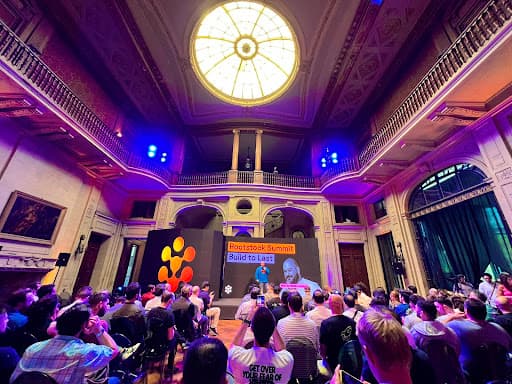
Diego Gutiérrez Zaldívar speaking at Rootstock Summit in Buenos Aires, November 2022
Over the next couple of years, we decided to join forces to expand Bitcoin to become that implementation of the internet of value, this network of networks for the handling, and transfer of value. And that’s how it started. This is now called DeFi, but back then it didn’t have a name.
Part of my realization was that people who live day to day, week to week, cannot afford to be exposed to the volatility of Bitcoin. So part of the initial design of Rootstock when we discussed with Sergio was how to create a peer-to-peer monetary system backed by Bitcoin, where people could access stable assets but not depend on counterparties, or third parties, to remove the counterparty risk.
So that’s a little bit of the vision that drove us to this point, and through the years, we have been doing different things to tackle that problem of creating a fully decentralized financial system.
How did that vision come to life?
DGZ: The first step was extending Bitcoin to include smart contract capabilties and stable assets. That came with the creation of Rootstock, the smart contract blockchain secured by Bitcoin that went live in January 2018. But we had already started to realize that blockchains also have inherent limitations which I talk about in terms of the Blockchain trilemma; if you want to have more functionality or scalability, you have to sacrifice security.
Diego discussing the Blockchain Trilemma at Rootstock Summit 2022
DGZ: So we realized we also needed to create off-chain protocols on top of the rest of the blockchain in order to sort out how to scale more, have a better user experience, and better interoperability with other blockchains, because we were being moved by this vision of this internet of value.
So it was not one network to rule them all, but basically, multiple networks that are properly interconnected. So that’s when the idea of RIF came to life and the first open source RIF protocols were launched.
What was the first RIF protocol to go live?
DGZ: RNS is the older protocol of RIF, which came to life in 2018, as a way to simplify the interaction of people sending money using aliases, and that has evolved over the years into a full identity solution on Bitcoin.
But yeah, those are the beginnings, I would say. This internet of value, this financial system that is inclusive by design can serve and empower financially, any human being in the world, built on top of Bitcoin.
How does RIF benefit the Bitcoin ecosystem? What is RIF trying to achieve?
TP: I’d say, RIF from an end-user perspective is basically a set of open source off-chain services and protocols, which we’re using to try to make secure blockchain technology and decentralized finance protctols in Rootstock available for everyday use cases.
For example, if you want to transfer value between, let’s say Argentina and Venezuela, Rootstock already is much better as a solution to accomplish that than the centralized solutions that are available currently. But it’s just too technical, too complex, and too inaccessible for regular people. So the RIF product suite tries to solve that.
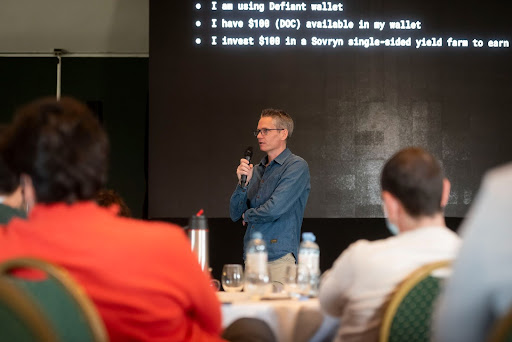
Tim Paymans running an Everyday DeFi workshop in Buenos Aires, May 2022
How does RIF help developers and existing members of the Rootstock ecosystem?
TP: On the side of partners, and developers, we’re trying to increase usability as well. We’re trying to package all these services that bring that goodness to regular users, package it in one SDK, well documented and open source. We want it to be a one-stop shop for protocols for anyone who want to provide their end users with all the good stuff Rootstock has to offer.
So the goal is for entrepreneurs, fintechs and software developers to build DeFi solutions using the RIF protocols?
TP: Correct. We don’t build for end users. Although it might seem otherwise if you hear me talking!
DGZ: You seem to have the end users in mind when you design the protocols and the products built on top of the product. I think that’s a great thing because it is something that in the blockchain space has been missing a lot. A user-driven user-centric view on “why?”
Sometimes I feel people lose sight of why we’re doing this now. People end up being in love with the technology instead of being in love with what the technology can bring to society.
What is the focus of RIF in 2023?
TP: If you want to see the RIF roadmap, check out rifos.org or, or the Rootstock Twitter account, It’s a high-level roadmap. But I’ll talk a bit more about the products that I’m most excited about myself. It’s a snapshot of what we’re currently doing.
One product, called RIF Relay is already available and was previously known as RIF Enveloping. It has been in the works for quite some time now but we have it live on mainnet today and you can integrate it, it works.
RIF Relay is a protocol that allows end users to transact on Rootstock without owning the native currency RBTC. Regular users don’t really want to be bothered with the complexities of gas fees, native currencies, etc. They have a job to be done. For example, exchange value from one country to another country.
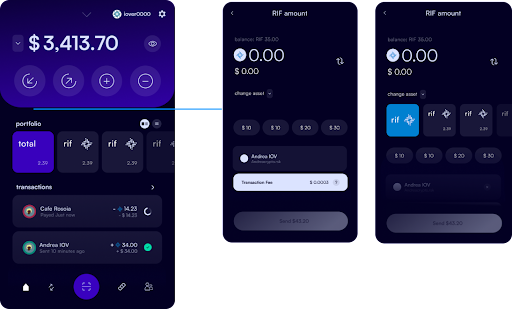
Integrating RIF Relay into a wallet or into a protocol allows you to deliver those benefits to end users. It abstracts the complexity of having to have a native currency and, in a way, blockchain away from the user.
DGZ: So for example, if I’m taking a loan in dollars or in Bitcoin, I will be able to pay in dollars, the cost of the loan, or if I use the blockchain to quickly and securely transfer $10 to my family abroad, I will be able to pay the fees of the network in dollars as well.
Are there any upcoming products you can share details on?
TP: Another protocol that we’re about to launch is RIF Flyover. And I see a couple of people in this Twitter Space who’ve been asking for Flyover for quite some time now. It allows users to move Bitcoin into Rootstock and back out of it in minutes — instead of the hours the PowPeg takes — in the most trust-minimized way possible.
DGZ: I think this will create a lot of flows coming in because that was a big friction point for Bitcoiners to get into Rootstock. So I imagine this will enable other things that are great, that is, I will be able to do a Bitcoin transaction and, for example, eventually get DOC, a dollar-stable asset, in a single Bitcoin transaction.
So I imagine this will create, or allow you to buy an NFT or do things with a Bitcoin transaction from a Bitcoiner perspective, or buy a ticket now that NFT can be a ticket for a concert, things like that. This is exciting.
TP: Yeah, absolutely. And to give some credit to the research and innovation team at IOVLabs, we’re already doing experiments with these combinations of Flyover and ecosystem protocols to do those kinds of transactions.
DGZ: Amazing. So for example, I can send Bitcoin and get a loan against my Bitcoins in dollars with one Bitcoin transaction? Of course, this requires some work on the user interface on the wallets that will integrate these protocols, but I think the possibilities are amazing.
What else is the IOV Labs team working on?
TP: This is a bit earlier in the development stage, but very exciting nonetheless. It will be launched in testnet, probably at the end of the second quarter of this year, I hope, and it’s called RIF Aggregation. It’s our payment aggregation solution.
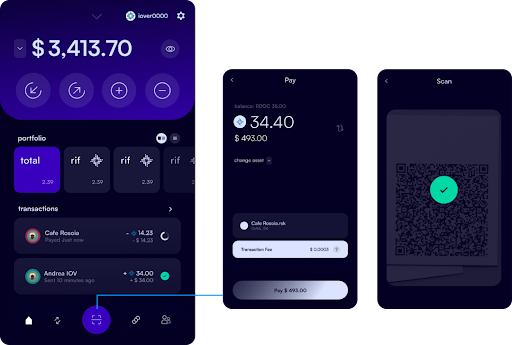
We already had an alpha release on testnet, and did some experiments with it, but we now picked up development really seriously and are going forward with our objective to take it into production. RIF aggregation is a ZK roll-up solution, and it will allow for super-fast off-chain transactions against near-zero costs. And for us, this is a neccessary requirement if you want to provide a smooth end-user experience to regular users.
DGZ: The payment experience that we see will be instant, very low cost, and, you know, you threw a lot of technical terms. I don’t want to get there because you talked about ZK. ZK is zero knowledge. It’s homomorphic computing, a very good way to optimize for privacy. Conceptually, payment aggregation is a layer on the blockchain payment infrastructure that scales and lowers costs and makes interactions faster.
What about RIF Wallet?
TP: Probably at the end of this quarter or early next quarter will deploy the first version of RIF Wallet. RIF Wallet is not only the replacement of the well-known rWallet, but it’s also a new generation of wallets. It’s a smart contract wallet.
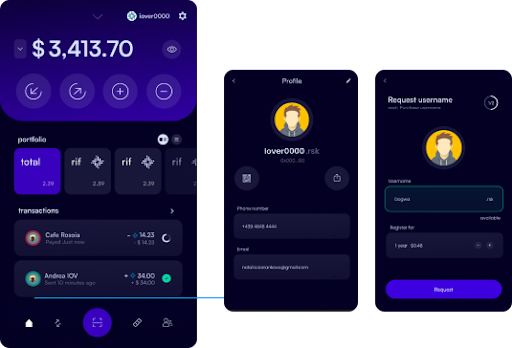
It will allow us not only to provide a smooth user experience to everybody who loves Rootstock, but it’s also a showcase on how you can integrate and combine the protocols that we just discussed or other protocols like RNS into one coherent end-user experience.
DGZ: I was going to play devil’s advocate. Why build a wallet? There are already many wallets that support Rootstock. We have Defiant, we have Buenbit, and we have other wallets like Latamex. So there are other wallets that are non-native, but also integrate the Rootstock assets.
TP: That’s a very good question. Let me make it very clear here,, we’re not building for end users. RIF Wallet is a showcase of what you can do if you use smart contract capabilities in a wallet and combine the different protocols that we’re building. So it’s a showcase of what you can do and allows you to build a wallet with easy access to multiple DeFi services on Rootstock.
DGZ: RIF Wallet, like everything we do, is open source. So if I’m a new Fintech entrepreneur, and I want to build a new solution I can take the RIF Wallet and build my solution on top of that and then I inherit the security audits and all the work you have been doing for the RIF Wallet and thus go to market much faster.
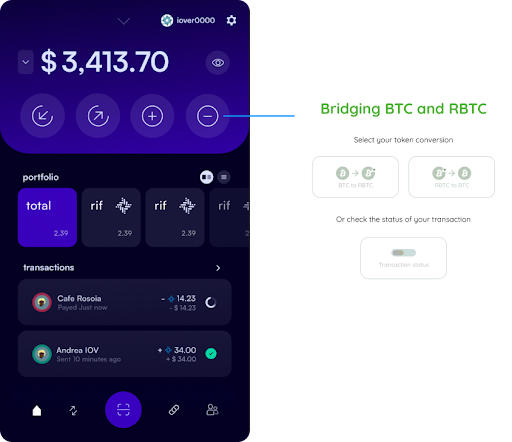
DGZ: And I imagine in the future governments also can use RIF Wallet to have a fully open source stack for citizens that cannot be co-opted by a vendor for example.
As a fintech builder, developer or entrepreneur why should I use the RIF stack?
TP: There are two major advantages.The first thing is that in all RIF protocols, we’re building to include revenue-sharing capabilities. That provides you as a partner or a FinTech with a business model based on transactions basically, in addition to your central business model. That will help you as a business as a startup reach sustainability sooner, even without a massive scale.
The second advantage, is when we’re done with this plan when the complete RIF stack is fully integrated in one SDK, it will allow you as an entrepreneur, startup or innovation team to really quickly build a complete FinTech solution, probably in months instead of years. So having an additional business model, requiring less skill to become sustainable and profitable and, being able to be built way faster than you would do without something like one integrated SDK.
DGZ: Today to start a FinTech or you need a lot of money, you know, maybe not so much to start it. But as you grow and have more users and more funds in custody, you need to have security set up and security teams are extremely expensive. And with RIF, you’re lowering that barrier of entry to a minimum and enabling more people to be able to innovate and to compete.
This will create a lot of competition in the financial sector, which, as we know, ends up bringing better financial services, more diversity and, more value for the end user.
TP: But we are not only trying to make the FinTech entrepreneurs happy. We want to get the benefits of Bitcoin into the hands of billions of end users. And we can’t do that with a small team of ourselves, right, we really need Fintechs to be able to build DeFi apps quickly using our SDKs and generate a business out of it. Otherwise, we’ll never reach that objective.
How can I get started building products using RIF technology?
TP: Get in touch with us. Reach out through rifos.org or rootstock.io, get in touch so that we can help you get started.
This was part one of an edited transcript of a Twitter Space between Diego Gutiérrez Zaldívar and Tim Paymans. Follow us on Twitter to keep up with the latest news.